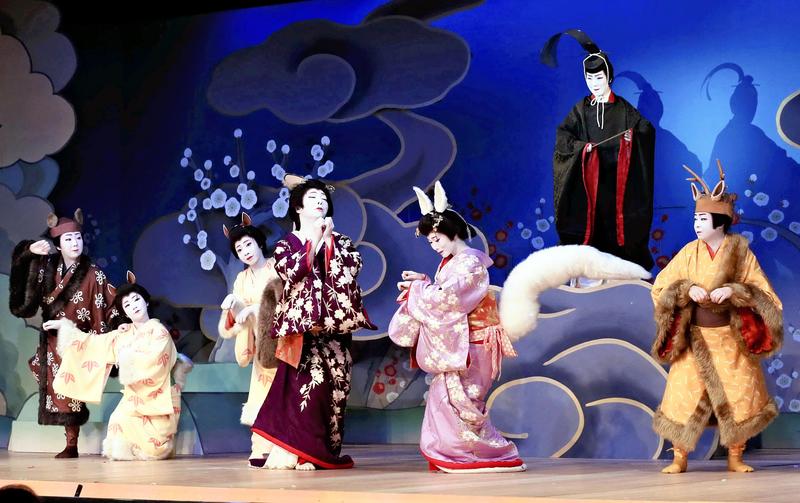
KYOTO -- The spring dance performance season (see below) has arrived in the hanamachi geiko districts in Kyoto. Starting with the Kitano Odori dance in the Kamishichiken quarter on March 25, dance performances by geiko and maiko are scheduled to be held through May, including the Kyo Odori in the Miyagawacho district, the Miyako Odori in the Gion Kobu district, and the Kamogawa Odori in the Pontocho district. During the season, geiko and maiko dancers compete to give the most brilliant performance.
With an eye on the recent increase in tourists from overseas, each hanamachi district is working to make the content of their plays easy to understand. They aim to attract a larger foreign audience through such measures as introducing plays based on Western stories.
Ahead of the other three hanamachi districts, an event to mark the eve of the opening of the Kitano Odori was held on March 24 at the Kamishichiken Kaburenjo theater in Kamigyo Ward, Kyoto, where the first new dance play there in 13 years was performed.
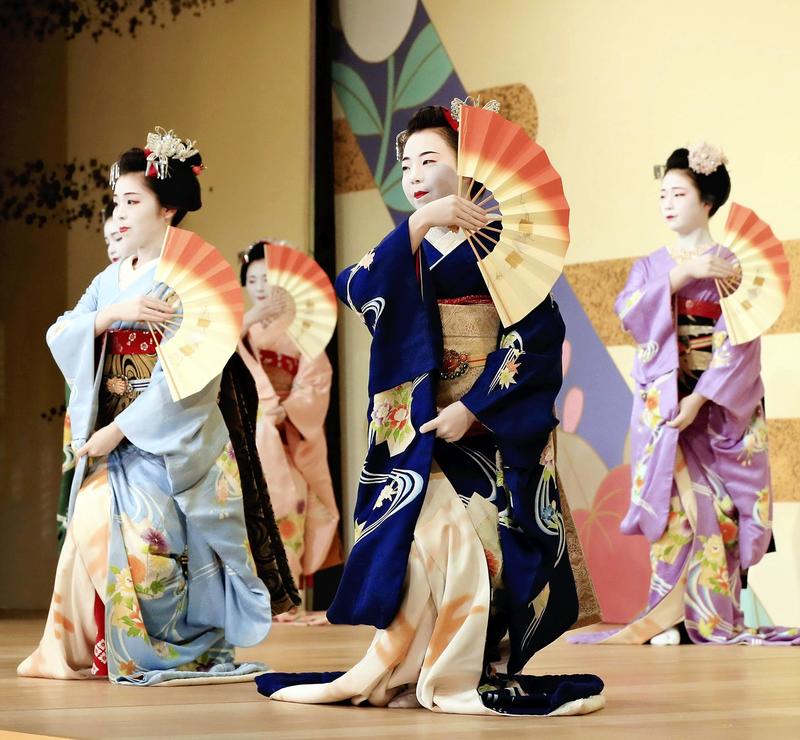
Called "Kitano no Mori no Monogatari" (A Tale of the Sacred Woods in Kitano), the play is set at Kitano Tenmangu shrine in the early Edo period (1603-1868). Foxes and Japanese raccoons disguise themselves as Yoshino Dayu, renowned geiko in the Shimabara hanamachi district, and compete with each other in dancing.
Dance master Hanayagi Suketaro choreographed the dance, trying to make the story easy to understand. Geiko dancers playing the animals lightly jumped and moved around with their hands curled like claws. "Not only was [the performance] beautiful, but it was interesting, too," said Tokumi Murono, a 45-year-old company employee of Shimogyo Ward, Kyoto. It was Murono's first time to see a hanamachi dance performance.
Kyo Odori and Miyako Odori performances are scheduled to begin on Sunday, and Kamogawa Odori events will begin on May 1. Each one has based its main program on Western stories. Traditionally, their programs have been largely related to kabuki, noh and Japanese classic literature, so this year's attempts apparently reflect the sharp increase in the number of foreign audience members.
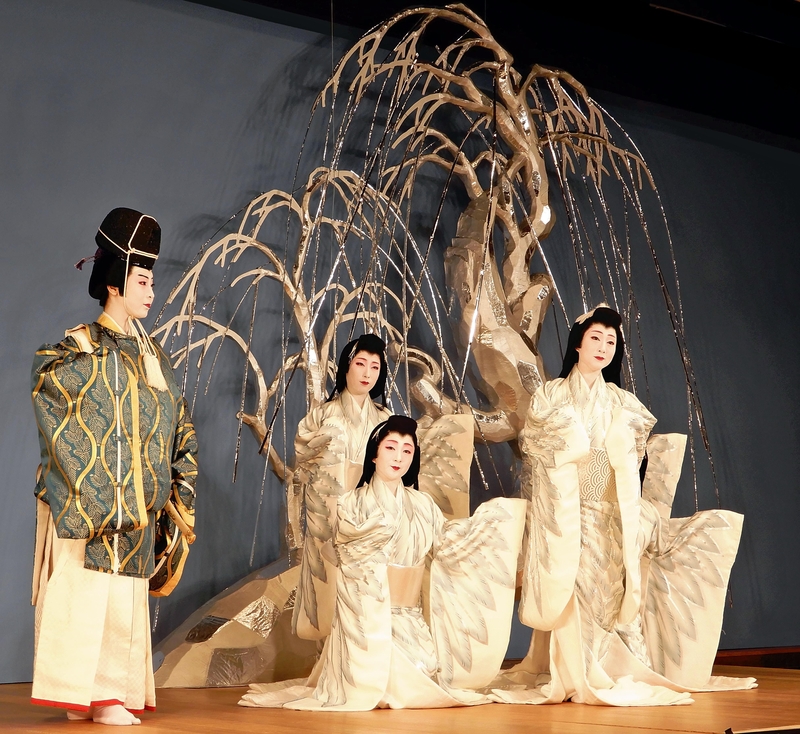
The Kyo Odori dance play "Koi no Hakucho" (Swan in Love) fuses the ballet masterpiece "Swan Lake" and a story about the legendary hero Yamato Takeru. It was devised by Sawako Kitabayashi, who wrote the script and directed the play, aiming to make it "familiar even to a foreign audience."
In the story, Takeru is in love with a white swan into which his fiancee was transformed. To claim his life, a black swan disguised as an oiran courtesan attempts to seduce him. The play is intended to create an enchanting atmosphere unique to the hanamachi district.
The Miyako Odori program features a dance play based on Hans Christian Andersen's fairy tale "The Snow Queen" as the fifth part of the six-part program. Since the tale gained attention as the basis for the 2013 Disney film "Frozen," it was picked by Tomoko Ueki, a professor at Doshisha University who wrote the script.
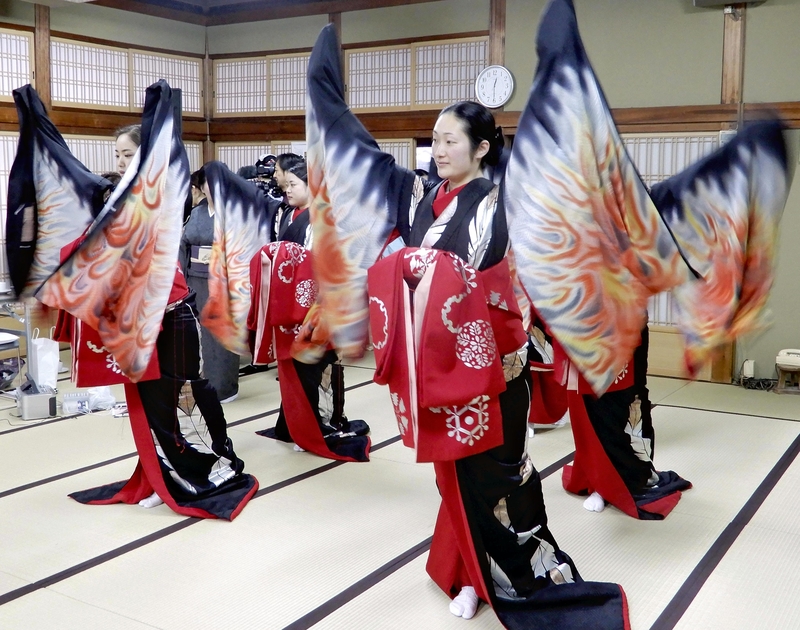
The Kamogawa Odori features a dance play based on William Shakespeare's comedy "A Midsummer Night's Dream." Foreigners have recently occupied some of the ordinary seats on the second floor, which go for reasonable prices. In response to this situation, Onoe Kikunojo, dance master and fourth-generation head of the Onoe school, suggested the world-famous play.
The hanamachi districts this spring will present such new twists, without just sticking to traditions.
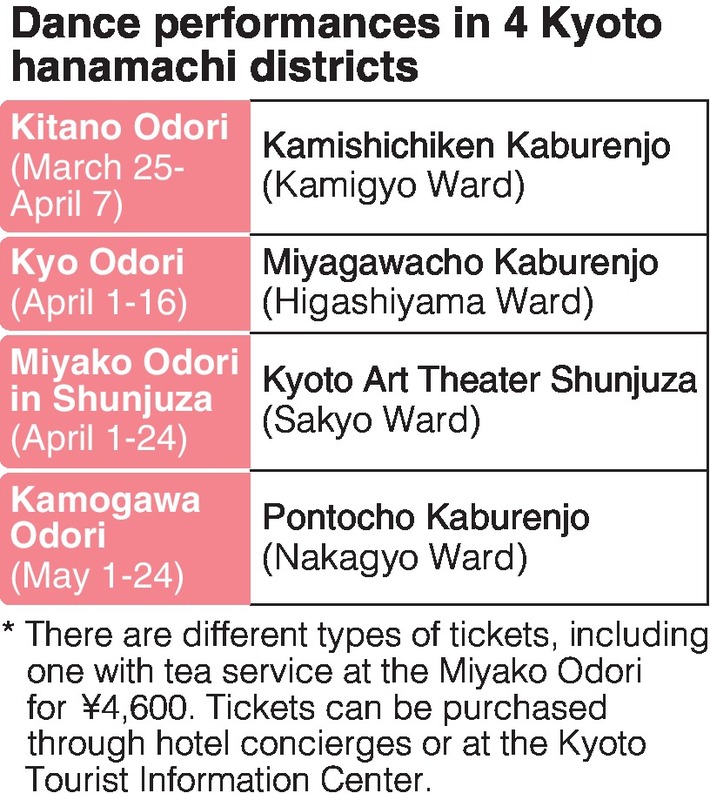
-- Spring dance performances
The Miyako Odori was first performed in 1872 as an entertainment related to the first Kyoto Exposition. The Kamogawa Odori also began in the same year. Different from performances given by a small number of geiko and maiko dancers at the request of guests, these group dances and dance plays gained popularity, and their performances have developed into one of the major tourism events in Kyoto. The Kyo Odori began in 1950 and the Kitano Odori in 1952. Of Kyoto's five hanamachi districts, the Gion Higashi district holds an autumn dance performance called the Gion Odori in November every year.
Read more from The Japan News at https://japannews.yomiuri.co.jp/







